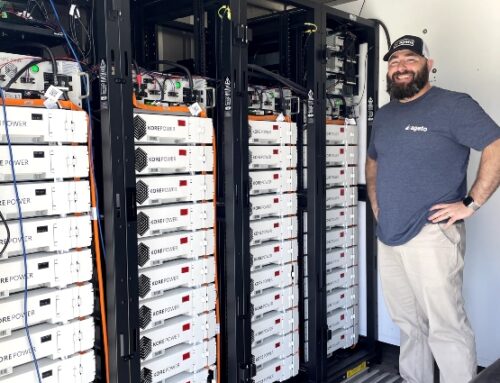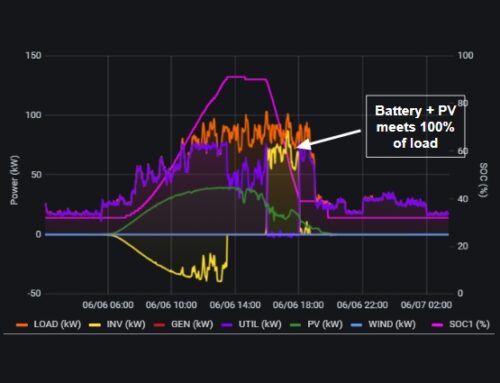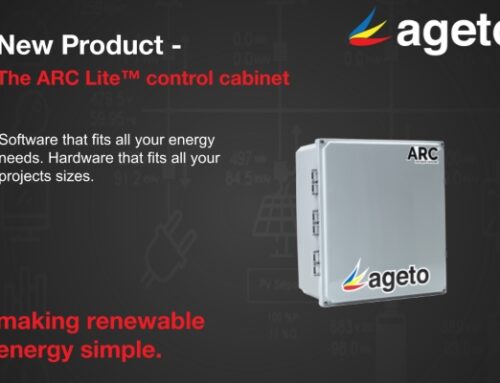There can be so much terminology that bounces around the world of distributed energy, at times, it can seem difficult to keep up. What’s a minigrid and how is it different from a microgrid? What about a nanogrid? A metrogrid?
As anyone in the renewable energy sector will tell you, the industry is still in its nascency and continues to evolve rapidly. As the industry continues to evolve, naturally, so does the language we use to describe it. There are voices that do influence the terminology of the industry, but by and large, terms are defined by those who use them and nothing is written in stone. Of course then, it is no surprise there is not always consensus. That being said, all the information here is based on experience and research and is intended to be a helpful guide and not a dictionary. So let’s jump in.
Definitions of italicized words are included at the end.
Microgrid vs Minigrid vs Micro-utility vs Nanogrid vs Metrogrid… I could go on
Most that work with Distributed Energy Resources (DERs) in the US are familiar with and comfortable with tossing around the word ‘microgrid’. Microgrid is a pretty standard “catch-all” term in the US and most other developed countries and is defined as a decentralized group of energy resources (e.g. solar or storage) that can operate interconnected to the larger electric grid or disconnect operating as an island microgrid as needed. This can be described as an on-grid, grid-tied or behind-the-meter microgrid (on the customer side of the utility meter) application. Conversely, an off-grid or island microgrid, operates without the ability to connect to the larger electric grid (sometimes called the macrogrid) and generates all electricity locally, such as remote applications or literal islands such as the Harbledown Island microgrid.
In emerging markets, such as Africa, India, Asia Pacific, or South America, a microgrid may serve a different role than in countries with more developed economies, where microgrids are usually installed to save on the electric bill by reducing demand charge electricity peaks or power resilience in the event of a temporary grid outage. In countries with developing economies, the national electric grid can be far more unreliable or even unavailable in some rural communities. Here it is more likely to hear the term minigrid. The connotation with minigrid in emerging markets is that it may be larger than a microgrid, serves a community or town, and may even encompass distribution lines or multiple customer meters. It may be connected to the larger electric grid, but more often, it is not. The goals of a rural minigrid tend to be different from a microgrid in say California. Rather than saving on demand charges, the goal of a minigrid is typically to replace the expensive and unreliable power of the macrogrid or of diesel generators.
In August, Ageto commissioned a microgrid project in Totota, Liberia. This microgrid project serves a small, rural town beyond the national grid, and is an upgrade to the previous diesel generator system that only ran certain hours of the day due to the cost of diesel fuel. This is a great example of what many would call a minigrid. In addition to a minigrid or an island microgrid, it can also be considered a micro-utility. This solar, storage and generator off-grid power system provides electricity to its customers through the Totota Electric Cooperative (TEC). The TEC was certified as an approved power provider in Liberia, the second in the nation only behind the government owned Liberian national electric grid. You may even hear this project called a metrogrid as it serves the town of Totota (this is probably the least common) or more often a community microgrid.
A nano-grid or a pico-grid are intuitively indicators of a very small microgrid system, typically only serving one customer or facility. On the incredibly small side, even a single solar panel, a car battery and a light bulb can be called a microgrid as it has all the attributes of a larger system, just serving a much smaller load. Fun Fact: Femto (or 1 x 10^-15) is smaller than pico (or 1 x 10^-12). Let’s go ahead and call this single light bulb example a Femto-Grid.
If this all seems a little mushy and unstandardized, that’s because it is. The terms used to describe DER power systems depend on multiple factors. A major factor is size, both in capacity and number of customers served. Nano is smaller than micro which is smaller than minigrid. It can be difficult to give these terms exact sizes, but a good rule of thumb is a nanogrid falls under 10 kW and serves a minimal number of customers, while a minigrid is typically larger than 50 kW and serves a community of people. A microgrid falls between, but can also be used as a “catch all”. Additionally, the application of the power system can have an equal effect on the connotation used to describe it, such as microutiliy or community microgrid. The name of the system can be used to convey the goals it accomplishes as well, such as a resilient microgrid.
As we say here at Ageto, once you have done one microgrid project, you’ve done one microgrid project. Each system is unique in size, application and goals. Having a vast bank of terminology to choose from reflects the complexity and diversity of the microgrid industry as a whole.
Microgrid Industry Terminology
Behind-the-Meter (BTM) – a microgrid installed on the customers side of the meter. Compared to “front-of-meter” microgrid projects which are typically owned by the utility company.
Community microgrid – a microgrid that serves a community compared to a commercial facility, campus microgrid, etc.
Distributed Energy Resource (DER) – A distributed energy resource is a power generating unit that operates locally and is typically smaller than the utility scale generation resources. DERs walk hand in hand with the idea of ‘localized energy’
Island microgrid – An island microgrid or islanded microgrid is a microgrid power system that is operating disconnected from the larger grid. This can be in the form of an off-grid microgrid installation or a grid-tied microgrid that has islanded itself from the macrogrid due to a grid failure.
Macrogrid – also called the national electric grid, included the generation, transmission and distribution of power to large areas, typically entire countries or beyond
Micro-utility – a microgrid or mini-grid whose operators have been certified as an approved power provider and perform functions similar to larger utilities such as maintaining infrastructure, selling energy to customers and setting energy prices.
Mini-grid – a term more often heard in emerging markets to describe a power system that may be larger than a microgrid, often serving a community.
Nano or pico-grid – a very small microgrid installation, typically less than 10 kW, often using single-phase assets compared to commercial and industrial microgrid installations which are largely 3-phase.
Off-grid – Not connected to the larger grid, can be a remote or rural microgrid, but not necessarily. Sometimes refers to “going off-grid” in a grid-tied system that has disconnected from the macrogrid.
On-grid or Grid-tied – Connected to the macrogrid
Resilient Microgrid – Resilience, resilient power or a resilient microgrid all refer to the ability of a grid-tied system to provide back-up power. This can increase complexity of a project, necessitating an islanding device and grid-forming energy resource.





